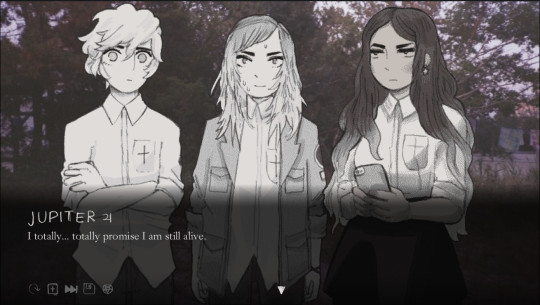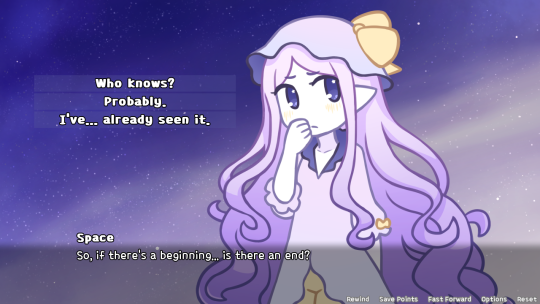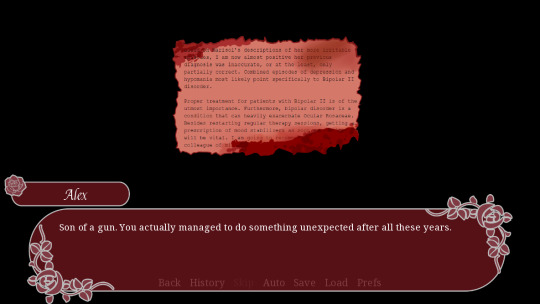#also it may or may not be obvious i recently watched a playthrough of wktd again. shhh.
Text

(id: art of ivorycello. she seems to be floating with her wings spread behind her and she holds a cello bow with a blade on the side. she smiles as her dress drifts to the side in the wind. her wings and hair are lineless and the latter is floating around her. /end id)
i had to draw her skin it’s so pretty
#ivorycello#blood tw#ivory#people have been drawing her with a sword and i really wanted to do like a bow blade thing.#does it make sense and is it practical? almost certainly not. does it look cool? yeah a bit.#i am never drawing wings like this again. i like how it came out but also. that was so tedious my wrist is gonna kill me.#art#talks#also it may or may not be obvious i recently watched a playthrough of wktd again. shhh.#……I post things at REALLY bad times huh. anyway.#ivorycello fanart
301 notes
·
View notes
Text
Interview with d Marie Licea
Recently, I had a chance to talk with d Marie Licea, developer of Us Lovely Corpses, about the creative process behind this fascinating “surreal-horror-romance” visual novel. Us Lovely Corpses is a VN I considered reviewing for this blog when I read it, but I struggled to write a review that would be interesting and accessible—explaining the parts that most impressed and resonated with me would mean spoiling it completely. But I encourage anyone who can handle some disturbing content in service of a great story and heartfelt message to try it out. This interview will start with some more general questions, and it includes a warning farther down before any spoilers for Us Lovely Corpses appear.

Question: Did you always plan for the story of Us Lovely Corpses to be a visual novel, or did you consider other mediums as well?
Answer: In its earliest stages, Us Lovely Corpses was actually planned as a comic! I came up with the original idea somewhere around 2014-2015—it was going to be about 10 pages, and would just cover the scene that ended up being the game's finale. Alex and Marisol (who weren't named yet) were very different—they were much younger, Alex wasn't really "a witch," and Marisol was originally a boy!
I sat on the idea a while, and the longer I did so the more I wanted to explore the history of these characters, which made for a longer and more unwieldy comic. Then in 2015, when I started learning about visual novels, it hit me that the concept could work really well in that format, especially when the "exploration" element came in.

Q: Were there any particular visual novels that influenced you?
A: Yes! The reason why I started getting into visual novels specifically in 2015 was that because that was the year We Know The Devil came out!
We Know The Devil totally shifted my viewpoint as to what a visual novel could be—no diss to dating sims, but before WKTD, I, like most people, just saw VNs as dating sims and occasionally something like the When They Cry series.
WKTD totally changed that for me—a short, incredibly contained story that also managed to be about so, so much, in a surreal, horror-inspired atmosphere . . . it really blew me away! Not only was it the game that got me into visual novels, but you can definitely see a lot of its influence on Us Lovely Corpses.
Besides WKTD, there was also Her Tears Were My Light, a fairly minimalist love story that used the "rewind" function in Ren’Py as part of the story. Utilizing mechanics as part of the narrative was a really cool idea to me that also ended up in ULC. (side note: I met and hired Alex Huang to do the music for Us Lovely Corpses because I loved the soundtrack for HTWML so much!)
Finally, I was really into the original Gyakuten Saiban (Ace Attorney) trilogy when I was younger, and the evidence gathering segments were a big part of those games. I originally envisioned the "rose clipping" segments of ULC like those parts, where you'd have to select each rose before cutting it, but sadly that was a little too complex for me at the time, and I eventually decided to go for something more simple in order to complete the game. But that initial idea was a big part of what made me try Us Lovely Corpses as a game, so it ended up still being a big influence in the end!

Q: Besides technical things like those mechanics and the exploration element, do you find that you have a different style of writing in visual novels as opposed to the stories you've done in other formats, like twine and comics?
A: I'm not sure if this is always the case for visual novels, but I find I have to format my writing differently when writing for VNs—specifically, in length of sentences and paragraphs. I've found my writing worked a lot better in Us Lovely Corpses the more I broke everything up into smaller fragments—larger ones or paragraphs didn't work as well, which can be a problem for me because my writing can tend to get a bit wordy!
This has to do a lot with the pacing of visual novels and how the player/reader is a big part of that. Control over pacing is a big part of why visual novels appeal to me, but you also have to think differently to get the best result.
Technical stuff aside, I found that, at least for ULC, my actual writing style remained pretty much the same. I think this has the benefit of making the writing in Us Lovely Corpses seem unique, but has the disadvantage of posing a problem for a certain something I didn't see coming at all: Let’s Players!
A few people have made videos of their playthroughs of Us Lovely Corpses, which is incredibly exciting, but when I watch them, I can't help but feel bad for them because they always read everything out loud . . . which means, with my somewhat wordy style, they have to do a LOT of talking!
I haven't actually gotten complaints about this or anything, but I still hope people who make videos of their playthroughs of ULC keep some water nearby!
Note: the next part of the interview contains spoilers for Us Lovely Corpses, as well as discussion of mental illness.

Q: As the story progresses, it becomes explicitly clear that the “monster” is Marisol’s bipolar disorder. Did you ever think about leaving the metaphor more ambiguous, and if so, what made you decide to be so direct instead?
A: I'd say if the "monster" was one specific thing, it would her Ocular Rosaceae, as it's the one specific thing that gives a physical form to Marisol's thoughts and unhealthy behaviors. But even that, in a way, is not taking into account her bipolar disorder and depression, her jealousy towards Alex, her self-loathing and introversion . . . "the monster" is all of those things, because at its core, the monster is mental illness. And mental illness is never just one thing, but many things and factors interacting at once to create something much bigger than a single diagnosis.
All that said, it's not incorrect to say that Marisol's bipolar disorder is the monster; it's just more accurate to say it’s part of Marisol's monster. Back when ULC was still a comic, I wasn't going to talk about specific diagnoses, but as the story grew I realized I wanted to talk more explicitly about mental illness. I don't exactly remember where the idea came about, but early on in the writing process I got that idea in my head of Alex finding that fake corpse and finding that doctor's diagnosis. In retrospect, it was a really, really weird scene, especially as it comes right off the heels of realizing what you thought was a dead body was just a weird joke, but I do like what it represents—in the middle of this surreal trip into a house filled with talking flowers, the story suddenly halts as you soak in this very blunt reminder that, magic aside, this is a world that is representative of the real world. Marisol may have a magical disease and be best friends with a witch, but she's a very real girl, so to speak.
So that harsh reminder is part of why I wanted to be so direct. I guess the other part would be that I just wanted to make no bones about it. Some things you want to leave up to interpretation, and some things you don't. From the very, very beginning the story was always about mental illness, so it just felt right to me to be upfront about it.

Q: One thing I noticed that I thought showed a lot of attention to detail in ULC was that in one of the rooms you explore there are two famous paintings that both have connections to suicide (Millais’s Ophelia and van Gogh’s Wheatfield with Crows). Are there any other little symbolic details like that you added to the story that some readers might have missed?
A: Ah, I'm glad you caught that! If I had stuck with the more Ace Attorney style of gameplay I would have liked to put more small details like that in. As it stands, the big example is probably pretty obvious—Alex's notes about each rose are fairly close to the standard "flower language" of different rose colors in real life. The fact that yellow roses can mean "jealousy" or "friendship" depending on what source you use actually ended up working very well with the story.
The last names of Alex and Marisol are probably pretty obvious: de Rosa ("of the Rose") and Flores ("Flowers"). Something that's probably less apparent is Marisol, a name that originally comes from a contraction of "Maria de La Soledad" ("Our Lady Of Solitude"), one of the titles given to the Virgin Mary.

Q: Was the flower language the reason you used roses rather than any other flower, or were there other inspirations for that as well?
A: There were a number of reasons! One being that Revolutionary Girl Utena was a big influence on my style and particularly on several parts of the game. There's also the whole dichotomy with roses/thorns. And there's also the simple fact that I have fun drawing roses!
Q: For my last question, are you working on any other visual novels right now?
A: I am as a matter of fact! I'm working on a visual novel set in Japan about some high school kids who explore a strange house. It's still in fairly early stages, but I think if I give it my all I will actually have a demo ready in time for Halloween, which would be great!
I’m definitely looking forward to seeing that demo—even more so after learning about all of the serious thought d Marie Licea puts into the details and themes of her work. If you’re as excited as I am about updates on her upcoming projects, you can follow her on itch.io or twitter, and considering supporting her patreon. Thanks for reading!
72 notes
·
View notes